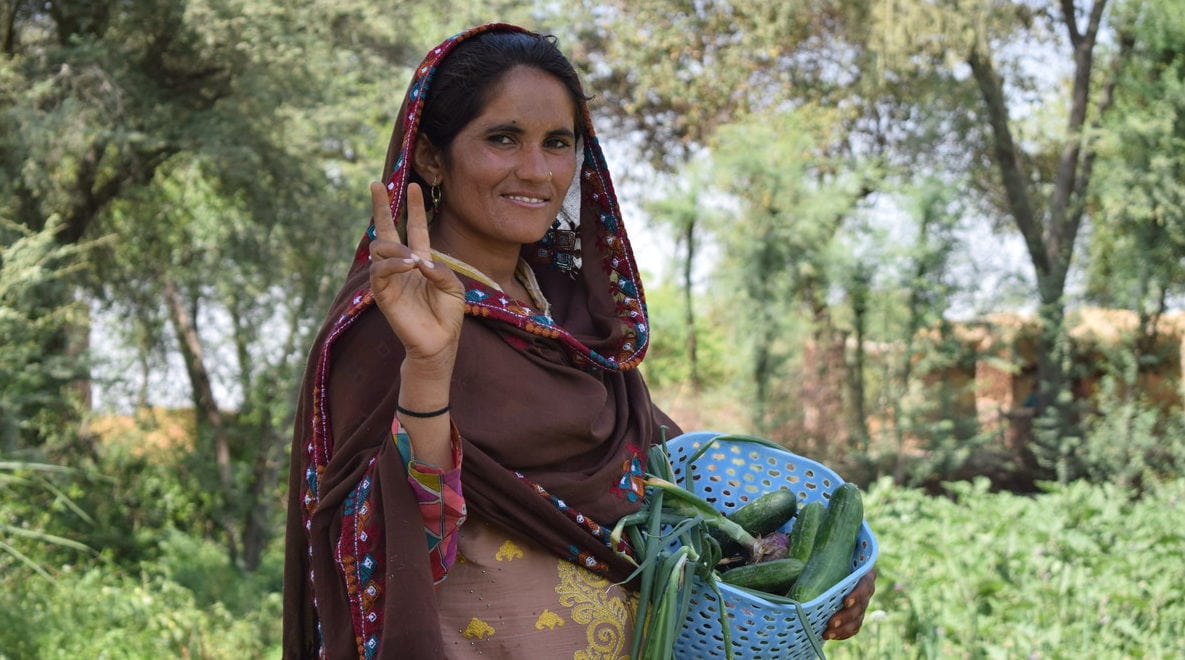October has arrived, which means that my colleagues and I are thinking about food even more than we usually do! This is the month of World Food Day, held every year on October 16 to celebrate food and its centrality in our life. Not only do we all need to eat, but food is also one of the most important things that connects all of us to each other and to our planet.
Last month, we learned the number of people experiencing hunger in the world has started to rise again. Having enough to eat is fundamental, not just to survival but also to long-term health and to every aspect of human and social development. This is why ending hunger is so important.
At the same time, malnutrition and diet-related disease related to overconsumption of food continues to rise globally. And we increasingly see the negative impacts that industrial agriculture is having on the climate and the environment. Industrial agriculture is one of the major causes of climate change, contributing 25-33% of global greenhouse gas emissions, yet this model of agriculture is also particularly vulnerable to climate change impacts, threatening our ability to produce food in the future.
Our global food system is fundamentally broken. The way we talk about solutions for our global food system is also broken.
Ending hunger has often meant ensuring food security. But ensuring food security is not enough to end hunger, much less address other problems like overconsumption, malnutrition, and climate change. Food security has a limited, more technical focus on accessing enough food to meet basic dietary needs.
The problem with this approach is three-fold:
- it doesn’t look at who’s responsible for ending hunger
- it doesn’t address any deep structural problems that mean certain communities are going hungry
- it doesn’t question the food system and its long-term impacts.
In other words, food security actually excludes people who are food insecure. For activist and academic Raj Patel:
“It’s impossible to have food security if the people affected by the policy don’t get to have a say about it and take it into their own hands to make it happen. A precondition for everyone having something to eat … is genuine and direct democracy. And that’s something that has been systematically denied to the world’s rural poor.”
That’s why we want to spend this month talking about the right to food. We need a transformation in how we produce, distribute, and consume food, and we need a transformation in the distribution of power and recognition. The right to food must be at the heart of this change. Food is not just caloric intake. It has cultural, spiritual, and traditional value in our societies. It helps shape who we are.
The right to food has a broader framing. According to the former UN Special Rapporteur on the Right to Food, Jean Ziegler:
“The right to food is a human right. It protects the right of all human beings to live in dignity, free from hunger, food insecurity and malnutrition. The right to food is not about charity, but about ensuring that all people have the capacity to feed themselves in dignity. The three main elements of the right to food are: availability, adequacy, and accessibility of food.”
For Ziegler, availability refers to current availability as well as future availability, requiring that our food systems have long-term sustainability. Adequacy means that food has to be healthy, nutritious, and culturally appropriate, and accessibility doesn’t just mean that food is cheap or that supermarket shelves are stocked but requires that our economic systems make it possible for everyone to afford food without compromising their other basic needs.
Additionally, a rights-based approach is key – not only because it reflects the injustice of people going hungry and addresses systemic issues, but also because it holds governments accountable and obligates them to ensure that human rights are being met. It also recognizes the power of people experiencing hunger and poverty as rights holders.
In the U.S., there is a lot of resistance among policymakers to recognizing the “right” to food, seeing it as just a “desirable policy goal” without any enforceable obligation. This framing has left us with food systems where 1 billion people around the world are suffering from hunger while 2 billion are experiencing negative health impacts from overconsumption. Here in the U.S., 40 million people are still facing hunger, including 12 million kids.
Without a human rights approach, the main way the U.S. addresses hunger is through income supports, food charities, and food aid. The simplistic frame of food security leads to the equally simplistic view that hunger exists because there is not enough food and that the world needs to produce more. However, the world already produces more food than ever before and enough for 10 billion people. Producing more and more commodity crops, at the expense of other people’s human rights, the environment, and public health, isn’t going to end hunger.
We need a new approach, one that recognizes that food, like water, is a common public good. Governments should be held accountable for upholding that right. Too often we see the opposite. The Trump Administration’s recent decision to count the use of public food assistance against immigrants applying for green cards is just one more indication of how, without treating food as a human right, charity won’t cut it.
We’re going to be talking about the right to food in more depth this month, looking at what the right to food means in the context of climate change, what’s happening in U.S. food movements and more on the rights of producers.
We support the right to food because we support the rights of people. A great way to celebrate the World Food Day is to reflect on what food really means to us and how it shapes the world we live in. What kind of food do you want to be eating?









